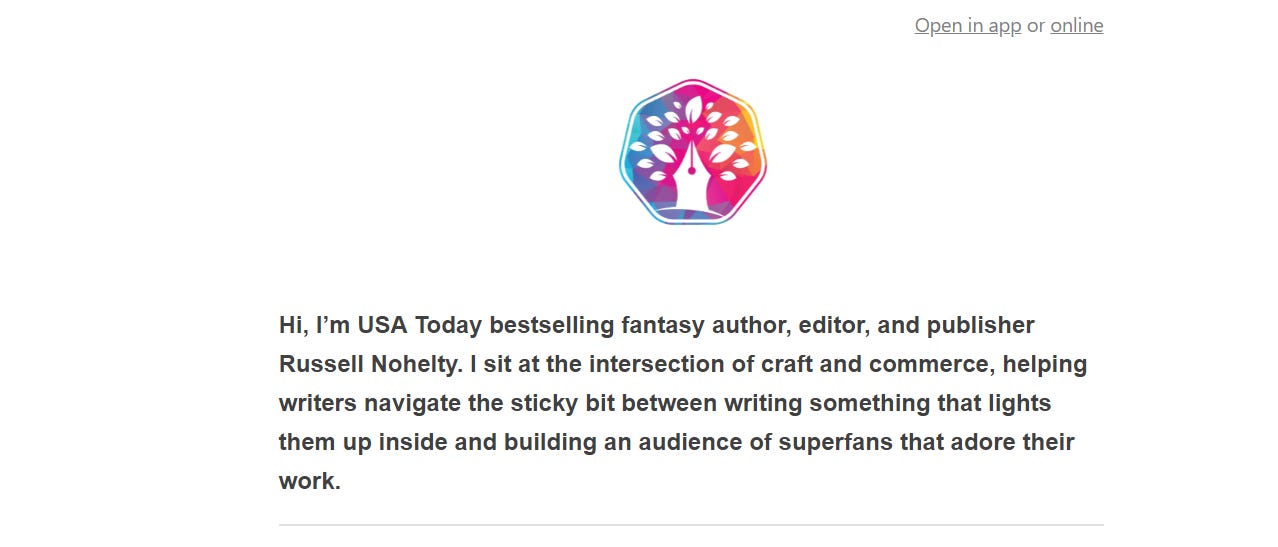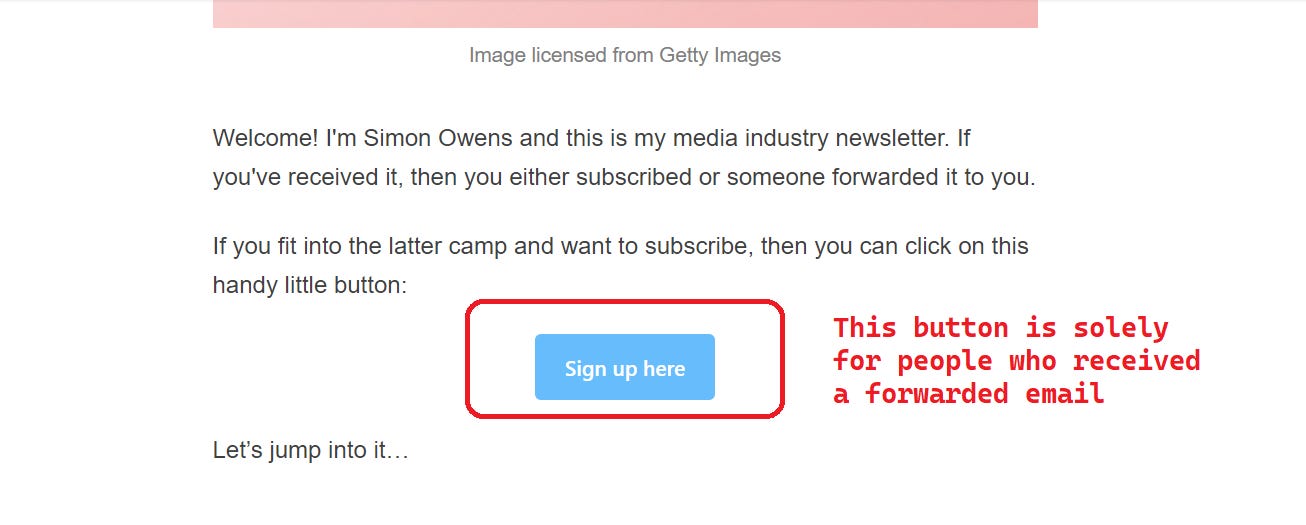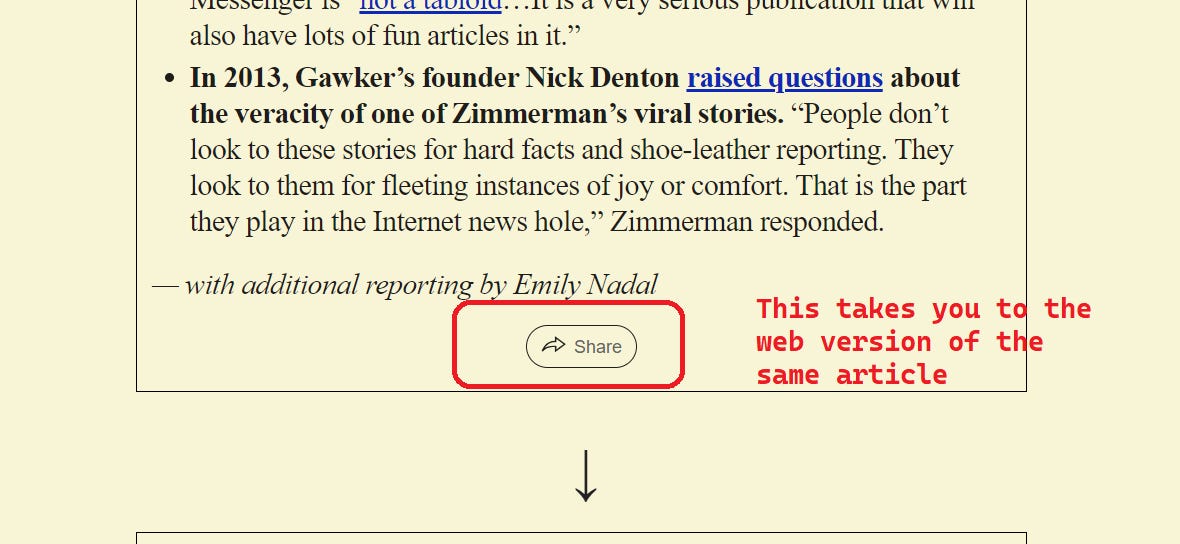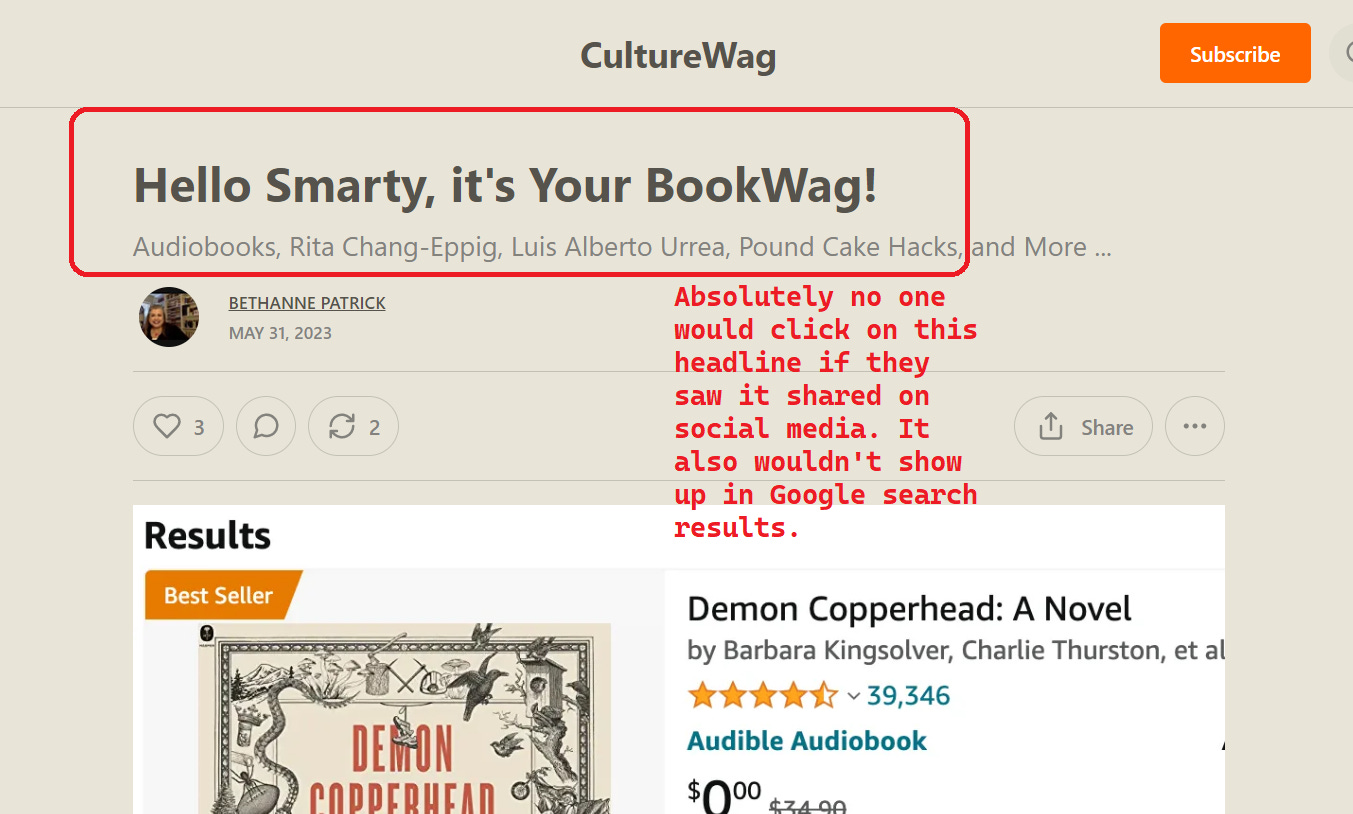Welcome! I'm Simon Owens and this is my media newsletter. You can subscribe by clicking on this handy little button:
Let’s jump into it…
You're not optimizing your newsletter enough
It’s easy to fall down an internet rabbit hole of “growth hacks” and case studies for how to boost your newsletter signups. A lot of the advice found in these articles centers on leveraging outside platforms and influencers to drive people to your newsletter subscription page — whether it’s through promotional swaps with other newsletters, viral Twitter threads, or paid advertising.
But while all these strategies can provide a great way to scale up an audience quickly, I’ve found that the vast majority of newsletters skip out on very basic optimization tactics that boost engagement, retention, and growth. Just as a team can’t win the Super Bowl without mastering its blocking and tackling, you’re probably not going to explode your email list without implementing all the small tweaks that maximize your newsletter’s impact with its already-existing audience.
Let’s look at some of those tweaks:
Reintroduce yourself to your readers each time
I just combed through the last 10 newsletters that landed in my inbox, and only one of them contained a proper introduction at the top. Here’s what it looked like:
Too many newsletter writers just assume that their readers already know who they are. They shouldn’t. In many cases, there might be a several-day gap between when someone initially signs up for a newsletter and when an issue actually lands in their inbox, and I can assure you that most people barely remember signing up in the first place. By contextualizing who you are upfront, you minimize the chances of the person just assuming that you added them to a list without their permission. This will reduce your unsubscribes and, even worse, the number of people who simply mark your email as spam.
It’s also worth remembering that a lot of your growth will come from your readers forwarding your newsletters to friends and colleagues — people who have even less context as to what they’re receiving. That’s why I make it extremely easy for those new readers to subscribe. Here’s the message that greets you at the beginning of every newsletter:
You don’t have to write a magnum opus, just something short and sweet to set the stage before you jump into the meat of your newsletter.
Push people to your web version
Most of your subscribers will read your newsletter directly within their inbox, which means if they want to share it with someone else they’re limited to forwarding it to another email address. But what happens if they want to post it on social media, text it to a phone, or share it on a messaging platform like Slack? For that, they’ll need the URL to the web version of that specific newsletter, and the more difficult you make it for them to find that URL, the less likely they are to share it.
There are plenty of ways to make the newsletter more shareable. One is by simply placing a “share” button within the newsletter. Here’s what it looks like when you reach the end of any longform article within a Semafor newsletter:
There are other, more subtle ways you can approach this. For instance, I embed a poll at the end of all my newsletter articles with a question referencing the article (you’ll find one at the end of this article you’re reading now). When someone votes in the poll, not only does that increase the engagement from my readership — driving up my click-through rate — but it conveniently places the reader on the web version of the article. Magic!
Optimize the web version so it’s more shareable
Here’s another huge mistake a lot of newsletters make: after they hit ‘send,’ they just leave the web version as-is.
Think about this for a second: this means that people landing on the web version of your newsletter for the first time from places like Google and Facebook are seeing the same messaging as those who specifically opted into receiving it in their inbox. Those are two completely different demographics of readers! Why wouldn’t you go back into your CMS and optimize the article/newsletter so it’s more easily discoverable on places like Google and Facebook? Here are some examples:
Headlines: Most newsletter writers opt to use short, pithy subject lines for their emails. That’s because the reader has already opted into receiving it, so you don’t need to utilize headline best practices to grab their attention. But what about the potential readers who might see your article shared on Facebook or Twitter? They absolutely need an additional push to get them to click on the article and read it.
For instance, earlier today I read a newsletter that had some interesting tidbits on how Amazon is optimizing its search results to push its users into buying the audiobook version of a novel. I would have shared it, but this is what the web version looked like:
It’s perfectly fine to keep using your clever email subject line, but you still need to practice the dark art of clickbait if you want people to discover the newsletter on the web.
Welcome message: Remember that welcome message I shared above — the one I place at the beginning of each newsletter? Well, that’s specifically geared toward already-existing subscribers and people who were forwarded my newsletter. The web version of my newsletter includes a welcome message that’s much shorter and to-the-point:
Featured image: Every single media outlet that publishes web articles affixes a main featured image at the top of every article. Why did this become a best practice? Because when people share those articles to social media and other forums, it auto-generates a thumbnail that’s much more likely to be clicked on than an article that doesn’t contain such an image.
These same best practices apply to the web version of your newsletter. You should always go back in and add a featured image at the top that somehow relates to the content.
Have you checked your welcome email lately?
Depending on which newsletter platform you use, it likely auto-sends some kind of welcome email when people sign up for your newsletter. Too many writers settle for the default version of this email, which is usually some bland pablum about how the reader should check their spam folder and/or move it to their priority inbox.
Why would you give up the opportunity to properly introduce yourself to your new reader and send them down a rabbit hole of your already-existing content? This is the perfect time to set the hook in and get them addicted to all of your stuff before they even receive your first newsletter in their inbox. Some newsletter publishers design an entire drip sequence of welcome newsletters aimed at educating new subscribers about their content offerings.
In my welcome newsletter, I make sure to point them to my archive of evergreen case studies, inform them that I host a podcast with similar content, and briefly explain what they’ll get if the convert into a paid subscriber. Even if only one out of 10 signups clicks on one of the links I provide, then that adds up to a lot of opportunities to engage.
Link to your past content
I’ve written about this before, but one of the worst assumptions content creators make is that their audience is already familiar with their past work. They aren’t. You should always look for opportunities to link deeper within your archives. If a reader clicks on that link and consumes another piece of content, then they’re less likely to churn. It also gives them an additional piece of content that they may end up sharing to their networks.
***
Hopefully you’ve realized by now that none of the above requires any sort of heavy lift; most of it involves just a few extra minutes of optimization — most of which can either be automated or simply copy and pasted — and it can produce sizable returns over time.
As a thought experiment, imagine if you could drive just 10% more impressions of your content every week through these optimizing techniques; that would drive pretty meaningful growth over the course of a year, all without making any changes to your content output. Not every growth strategy requires home runs; sometimes you just need to focus on the singles and doubles.
What do you think?
Some quick housekeeping notes
Before we jump into today’s issue, I just wanted to give you a heads up that I’ll be taking next week off and there won’t be a newsletter landing in your inbox. The reason for this is simple: I’ll be on a boat floating around the Galápagos Islands. We’ll only be granted one hour of internet a day, and I assure you it won’t be spent writing this newsletter.
But this presents a predicament: my birthday is next week, and that’s usually the one day of the year that I send out an email that’s purely promotional in nature. So in lieu of that, let me just get that promotional message out of the way and then we can return to our regularly-scheduled programming:
If you’re not already a paid subscriber, please consider rectifying that situation.
It’s been a little more than three years since I started working on my newsletter and podcast full-time. I took an immediate pay cut when I embarked on this journey, and while I hoped to finally recoup those losses this year, I’ve fallen victim to the advertising downturn that’s impacting the entire industry. That means I’m more dependent than ever on support from readers like you.
And don’t worry, I don’t expect you to subscribe merely out of the goodness of your heart. I have all sorts of benefits for subscribers. They include:
A half-hour introductory phone call with me: I introduced this benefit a few weeks ago and already I’ve had some amazing calls with my subscribers.
Participation in my live Office Hours calls: These are Zoom calls where I choose a topic, recruit experts on that topic, and then allow you to pick their brains.
Recorded video of those Office Hours calls: These are for the people who aren’t able to make it to the live version of the call.
The ability to submit questions for my new podcast series: You’ll learn more about that further down in this email.
If you’ve ever thought about subscribing, now is the perfect time to do so. Use the link below and get 10% off for your first year:
I answered your questions!
Earlier this week I put a call out to my newsletter list for you to submit questions for me to answer. Many of you obliged, and then later that week I recorded a video/podcast in which I tried to answer as many questions as possible within a one-hour time limit. Joining me in this endeavor was Craig Ettinger, who spent close to 20 years on the business side of large media companies like Time Inc and Conde Nast.
We answered a range of questions, including:
How traditional media outlets can retain their star talent
Where an audience engagement editor should sit within the hierarchy of a news organization
Whether ChatGPT spells the end of news aggregation
If we’ve reached the end of the “scale” era of media
You can watch our discussion in the video embedded below:
If video embeds don’t work in your inbox, go here.
Quick hits
Nextdoor has filled in a lot of the information gaps left by shrinking newspapers, and that’s made it extremely easy for misinformation to proliferate. [The Atlantic]
I still remember the first time I used Google Docs to collaborate on a document with a work colleague. It was such a breath of fresh air that I immediately became addicted to the platform. I now find it immensely jarring when I encounter the rare person who still passes around Microsoft Word documents as part of their work product. [Wired]
The New York Times gaming app has become a monster driver of both subscriptions and retention. [The Verge]
Apparently newsletters are having a bit of a moment right now. Who knew??? [WWD]
"The Financial Times has seen that improving retention by just one per cent is equal to increasing subscription rates by 15 per cent." [Journalism.co.uk]
ICYMI: He sold his newsletter to a climate tech company
Climate journalist Louie Woodall talked about his newsletter’s origin story, his monetization strategy, and how the publication will evolve under the umbrella of a larger company.
Let’s take this relationship to the next level
I only send out this newsletter twice a week, but I’m actually curating media industry news on a daily basis. Follow me on one of these channels if you want to be more plugged in:
Do you like this newsletter?
Then you should subscribe here:
Simon Owens is a tech and media journalist living in Washington, DC. Follow him on Facebook or LinkedIn. Email him at simonowens@gmail.com. For a full bio, go here.









I found you through Russell Nohelty, and I'm so glad I did! I've just subscribed, albeit as a free subscriber right now, but I hope to upgrade soon. This one newsletter was so helpful and full of sound advice that I'm going to implement your suggestions right now.
Thank you!
Thank you! This was actually really insightful for a newbie like me. I'll definitely try to use some of these tips in my new posts!